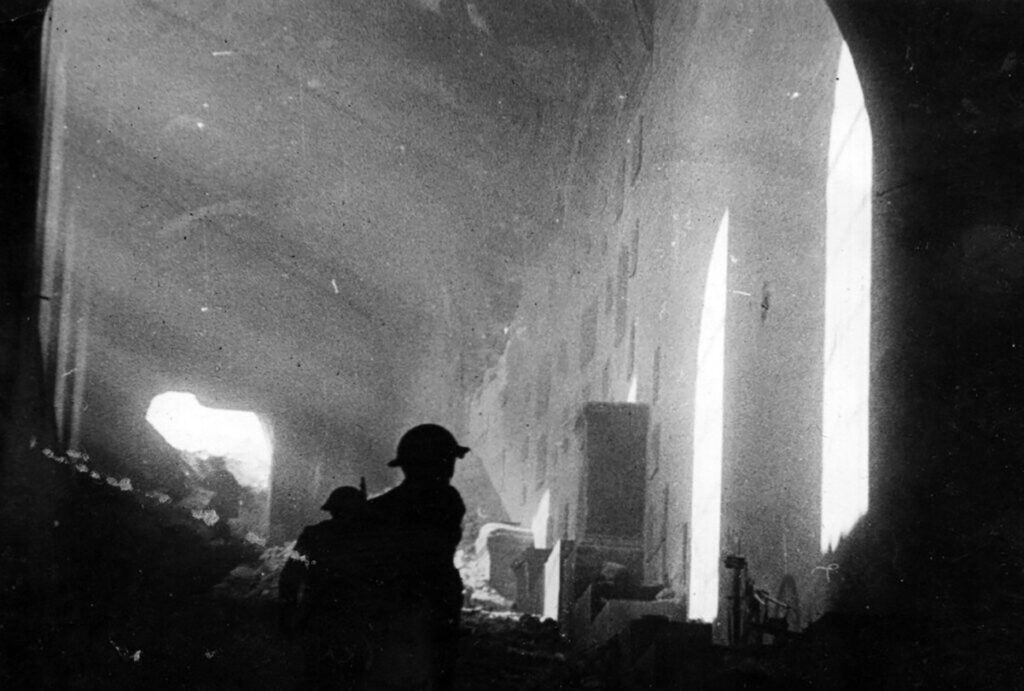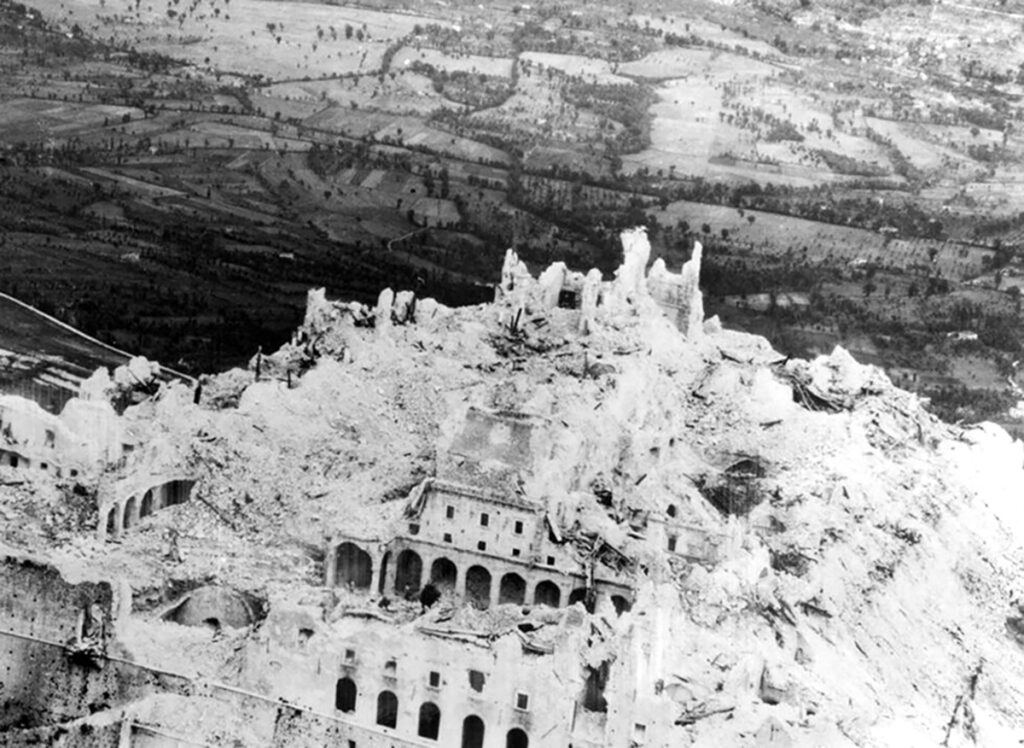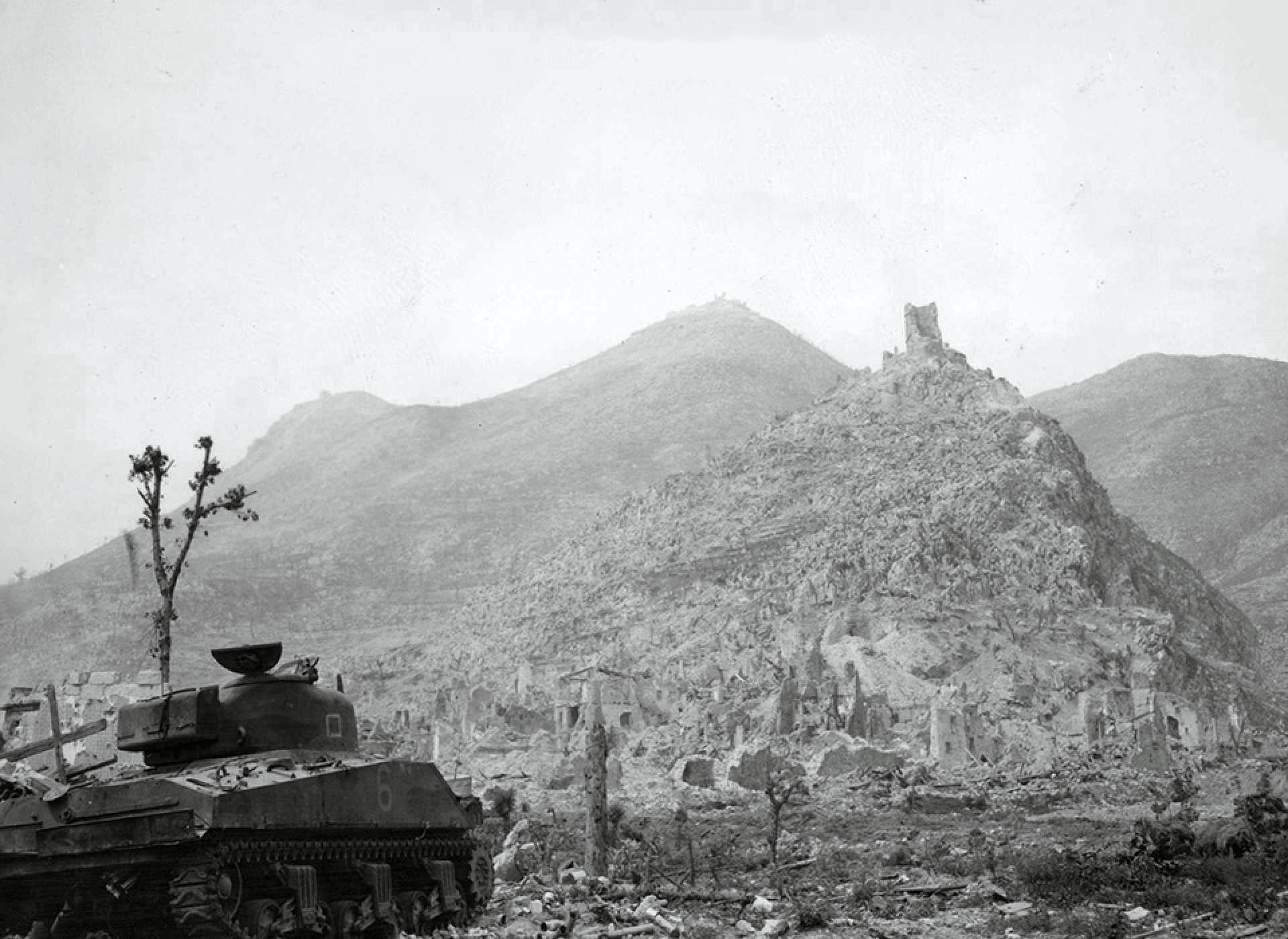Allied forces landed in the Italian peninsula in September 1943. The Apennine Mountains divided the peninsula, and Allied troops split and advanced on both sides. They took control of Naples and continued the push towards Rome.
Monte Cassino was the gateway to Rome. It towered above the city and provided unobstructed views. German troops occupied lookouts on the hillside but agreed to stay out of the abbey because of its historical importance. The precious manuscripts and antiquities housed in the abbey had been removed to Vatican City for safekeeping (although some works of art were stolen by German troops and transported north).

The First Phase of The Battle of Monte Cassino
The first phase of the operation began on January 17 with an Allied attack on German positions. Thomas E. McCall, a farm boy from Indiana, found himself in the crosshairs of the battle of Monte Cassino. On January 22, 1944, during heavy fighting, he was accidentally struck by friendly fire. After all his men had been killed or wounded, he single-handedly destroyed two enemy machine-gun positions and charged a third before being captured.
Presumed dead, McCall was posthumously awarded the Medal of Honor on April 17, 1945.

However, unknown to his unit was McCall was alive but wounded. He became a German POW and spent the next 18 months in makeshift hospitals. “They didn’t even have an aspirin to give you,” he said. “There were no pain-killing drugs for either the Germans or us. The surgeon had a handful of tools, and two or three other guys would hold you down while he operated on you.”
McCall was eventually liberated and earned the distinction of being one of the few posthumous Medal of Honor recipients that lived to tell about it.
After all his men had been killed or wounded, he single-handedly destroyed two enemy machine-gun positions and charged a third before being captured. For his actions, he was awarded the Medal of Honor the next year, on April 17, 1945.
McCall also served and was wounded in the Korean War, reaching the rank of Master Sergeant.
McCall died at age 49 and was buried in Spring Vale Cemetery, Lafayette, Indiana. He drowned while rescuing his 8-year-old son, Thomas.

By early February, Allies reached a hill just below the abbey. Some reports suggested Germany might be using the abbey as an artillery observation point, resulting in a controversial decision to destroy the abbey. On February 15, 1,150 tons of bombs rained down on the abbey reducing it to rubble. German forces quickly took up position in the ruins, utilizing its vantage point to prevent Allies from advancing.
The Heavy Attacks in the Town of Cassino
A third offensive began in March with heavy attacks in the town of Cassino, but tenacious German forces held their position. The fourth and final assault, known as Operation Diadem, began on May 11 and included attacks from US troops with help from British, French, and Polish Allies.

On May 18, Polish forces captured Monte Cassino. Soon after, on June 4, 1944, Allied forces liberated Rome.
Read About Other Battlefield Chronicles
If you enjoyed learning about the battle of Monte Cassino, we invite you to read about other battlefield chronicles on our blog. You will also find military book reviews, veterans’ service reflections, famous military units and more on the TogetherWeServed.com blog. If you are a veteran, find your military buddies, view historic boot camp photos, build a printable military service plaque, and more on TogetherWeServed.com today.

My dad was somewhere there,36ID.